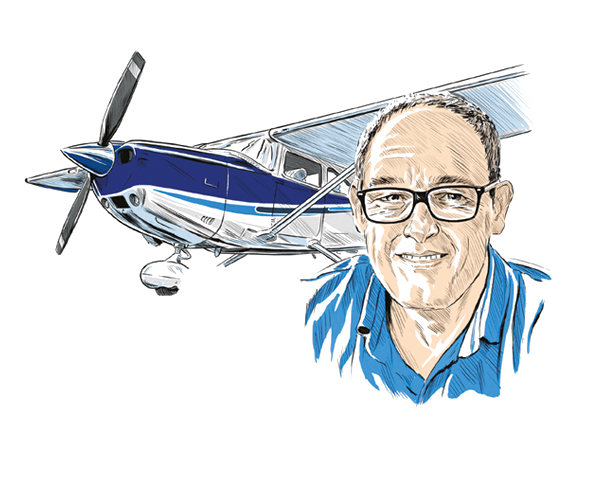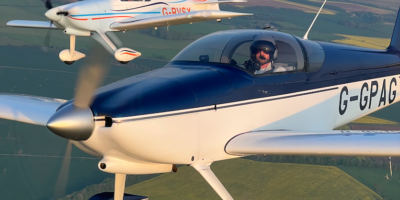I’ve had a quiet word with myself, and I can confirm that I don’t think Bill Gates is planning to vaccinate anyone with miniature microchips, that big Pharma is hiding a cure for cancer, or that the world is flat. I’ve even checked in the mirror to make sure that I’m not wearing a tin foil hat. I don’t even subscribe to the theory that the CAA and EASA are doing their best to stop all aviation (although I do revisit that one from time to time). Conspiracy theories ’r us is definitely not my thing. But I can’t help wondering what’s going on between the DfT and the CAA.
Quietly, and without the majestic fanfare that you might expect given the subject, we’ll now have some more last minute pop up RA(T)s for royal rotary flights, a Royal Rash of Purple Rotary RA(T)s if you like. These unwanted and unwelcome purple intrusions will be presumably popping up where none had previously existed. All done without consultation, and all done at the last minute with a good chance of being missed if you planned your flight and checked your Notam before heading to the airfield, or even if you are embarking on a long flight. I understand that the CAA is calling airfields close to any Royal RA(T) and letting them know about it.
“Phoning a small number of airfields is not exactly getting the word out to the pilot population”
This is General Aviation. We fly from pretty much everywhere to pretty much anywhere, that’s the whole point, so calling a small number of airfields is not exactly getting the word out to the pilot population. Of course if you inadvertently fly into a RA(T) that you don’t know is there through no fault of your own, it risks being treated, as per the CAA’s relatively recent policy, as an alleged infringement of Air Navigation legislation with all that entails.
So what’s the point? What danger existed that will no longer exist? How many additional security issues might be created? What’s the safety benefit? Where was the consultation? Where’s the communication? Unsurprisingly, the CAA wanted to point out that all of the above had been done at the request of the Government, which is kind of funny because if you take a look at the CAA’s website it says, We are a public corporation, established by Parliament in 1972 as an independent specialist aviation regulator. Taken on its own this might not be a thing, and it still might not be a thing, but on the other hand there might just be the start of a pattern emerging.
Last month’s cover story was all about Electronic Conspicuity, and about the money that had been found to enable the CAA to manage grants of up to £250 for pilots fitting some kind of EC. I thought, and still think, that this is a very good thing, but there was one aspect that confused me. The CAA has a written policy on its preferred direction for EC in General Aviation, at the risk of repeating last month’s feature, that policy favours ADS-B via 1090MHz (if you missed it, you can read the feature here). So why didn’t the CAA use the opportunity to nudge everyone in their preferred direction by making the rebate available to anyone doing something that leads to ADS-B out? That wouldn’t have favoured any one company, and it would have meant that more of us can see and be seen by, well, more of us.
So what had happened? Had the CAA changed its policy, had it decided that the technology of the future was going to be CRP-5-powered semaphore signals? The answer wasn’t clear, and when I asked the question, the answer I got suggested that I might want to ask the DfT, which of course I did, getting 60 words in reply that said more or less nothing.
Maybe I made a mistake last time. Nope, the CAA website still says, We are a public corporation, established by Parliament in 1972 as an independent specialist aviation regulator.
I get the DfT is the CAA’s boss. I completely support the idea that an elected government should set high level policy and have oversight of those that regulate us, but here it’s almost as if we have government getting involved in the minute detail of aviation and airspace regulation. I don’t think that makes any sense, and in the couple of examples cited above, it clearly hasn’t led to logical, evidence-based, proportionate regulation.
There’s plenty enough wrong with the CAA to keep the DfT busy on higher level reform for ages (see my November column here ) so maybe leave the detail to the CAA, encourage them to adhere to the Government’s Better Regulation principles, i.e. to be Proportionate, Accountable, Consistent, Targeted and Transparent.
There’s been a few things of late where either the CAA or DfT has fallen short, and the blurring of the lines is making it hard to know in which direction to swing the metaphorical piece of two-by-four timber when something is wrong.







